Given below is a diagrammatic representation of the internal structure of an organelle found in a plant cell study the same and then answer the questions
(i) Identify the organelle:
(ii) Name the physiological process occurring in this organelle..
(iii) Mention one way in which this process is beneficial to man.
(iv) Name the phases of the process occurring in the part labelled '1' and ‘2’
(v) A chemical substance ‘NADP'plays an active part in one of the phases. Give the expanded from of NADP and state its role in the above process.
(vi) Represent the physiological process mentioned in (ii)) above in the form of a chemical equation..

(i) Chloroplast.
(ii) Photosynthesis.
(iii) It is a process supporting all life on earth. All animals including man, ultimately depend on plants for food as every food chains have just one starting point, i.e., plants the producers.
(iv) The process occuring in the part labelled .I is .dark, reaction or biosynthetic reaction or Calvin cycle.. The process occurring in the part labelled .II. is .light Reaction or Photochemical reaction or Hill reaction..
(v) The expanded form of NADP is Nicotinamide Adenine dinucleotide phosphate. NADP is reduced to NADPH by accepting one electron. Now this NADPH in the dark reaction transfers its hydrogen through a series of chemical reactions to combine with CO2, to produce C6H12O6 by using energy from ATP.
(vi) 6CO2+12H2O(sun light)−−−−−−−→ChloxrophyilC6H12O6+6H2O+6O2↑⏐
⏐
⏐⏐
Topper's Solved these Questions
- PHOTOSYNTHESIS IN HIGHER PLANTS Book:ICSEChapter:PHOTOSYNTHESIS IN HIGHER PLANTS Exercise:REVIEW QUESTIONS (MISCELLANEOUS QUESTIONS WITH ANSWERS)
Explore 8 Videos
- PHOTOMORPHOGENESIS IN PLANTSBook:ICSEChapter:PHOTOMORPHOGENESIS IN PLANTSExercise:REVIEW QUESTIONS (LONG ANSWER TYPE QUESTIONS)
Explore 6 Videos
- PLANT GROWTH AND DEVELOPMENTBook:ICSEChapter:PLANT GROWTH AND DEVELOPMENTExercise:NCERT EXERCISES WITH ANSWERS (DIFFERENTIATE BETWEEN)
Explore 11 Videos
Similar Questions
Given below is a diagrammatic representation of the internal structure of an organelle found in a plant cell. Study the same and then answer the questions that follow:
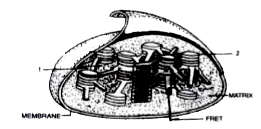
Identify the organelle.
View SolutionGiven below is a diagrammatic representation of the internal structure of an organelle found in a plant cell. Study the same and then answer the questions that follow:

Name the physiological process occurring in this organelle.
View Solution
Knowledge Check
Observe the diagram given below and answer the questions:
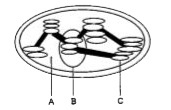
Identify the cell organelleAMitochondriaBLysosomeCRibosomeDChloroplast
Given below is a diagrammatic representation of the internal structure of an organelle found in a plant cell. Study the same and then answer the questions that follow:

Name the phase of this process occurring in part labelled 1 and 2
View SolutionGiven below is a diagrammatic representation of the internal structure of an organelle found in a plant cell. Study the same and then answer the questions that follow:
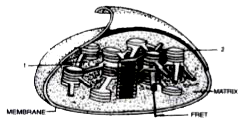
Mention one way in which this process is beneficial to man
View SolutionGiven below is a diagrammatic representation of the internal structure of an organelle found in a plant cell. Study the same and then answer the questions that follow:
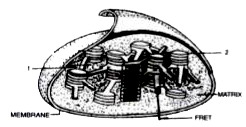
Represent the physiological process which is beneficial to man in the form of a chemical equation.
View SolutionGiven below is a diagrammatic representation of the internal structure of an organelle found in a plant cell. Study the same and then answer the questions that follow:
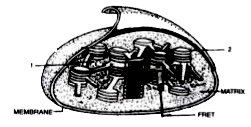
A chemical substance NADP plays an active part in one of the phases. Give the expanded form of NADP and state its role in the above process
View SolutionGiven below is a diagrammatic representation of the process of fertilization. Study the same and then answer the questions that follow:
Name the parts labelled 1, 2, 3, 4, 5 and 6.
View SolutionGiven below is a diagrammatic representation of a certain part of the process of circulation of blood in man. Study the same and then answer the questions that follow:
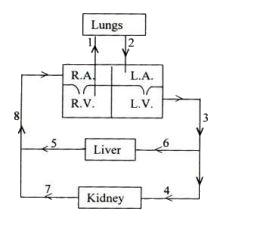
Name the parts labelled 1, 2, 4 and 6.
View SolutionGiven below is a diagrammatic representation of a certain part of the process of circulation of blood in man. Study the same and then answer the questions that follow :

Name the parts labelled 1, 2, 4 and 6
View Solution

